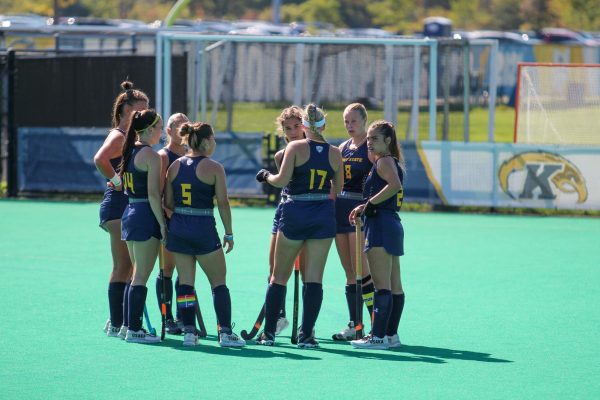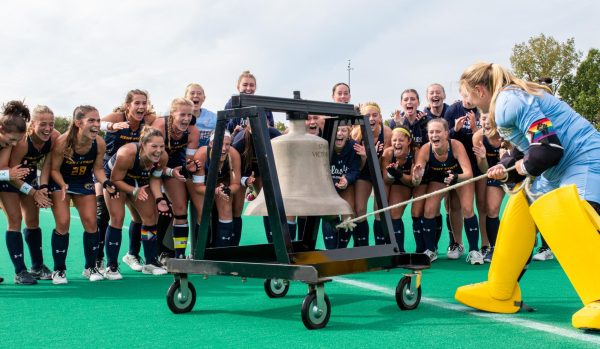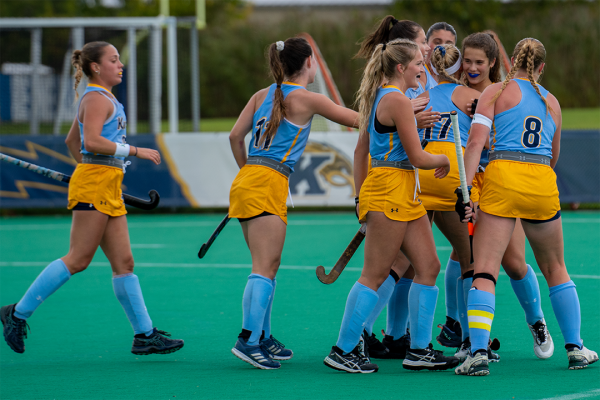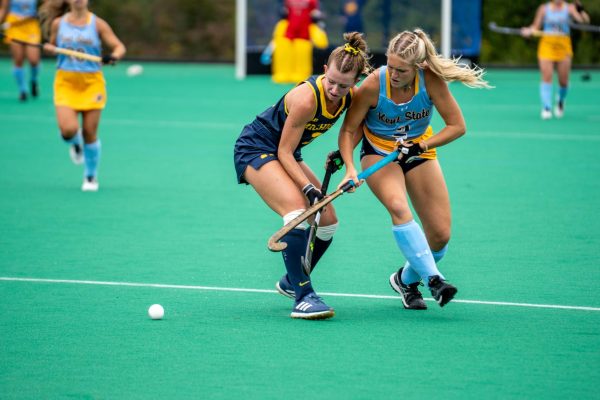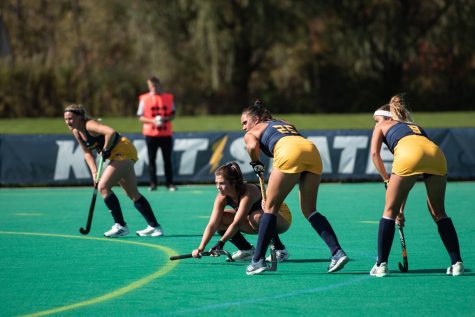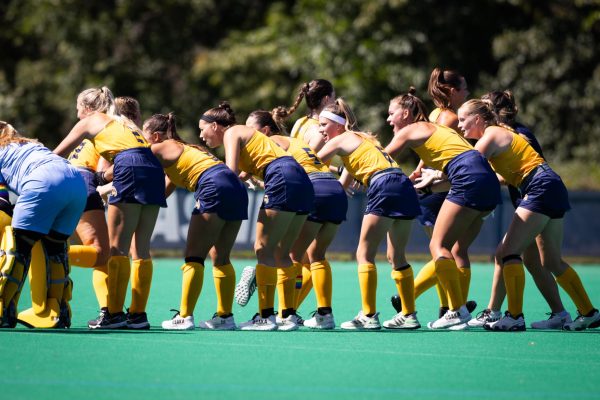Recognizing women of Kent State
March 22, 2017
As cliché as it may be, women do come in all shapes, colors and sizes. While that will never change, Women’s History Month is as good a time as ever to recognize those differences that make each female unique.
Women make up 61 percent of the student body; the majority at Kent State, according to the university’s student body profile.
Here are the stories of three of those women. Each has her own perspective, but what they share is their passion and pride in being a woman in the United States in 2017.
These stories are a part of the Kent Stater project, “Celebrating Diversity: The Women of Kent State” that highlights a diverse group of women across Kent State’s campus. Look for the full video stories in early April online at KentWired.com.
Lama Abu-Amara
When asked what trait women have that strengthens society, junior chemistry major Lama Abu-Amara had a simple answer.
“I would say their kindness,” she said. “We just have very big hearts.”
According to Abu-Amara, as a Muslim-American, she sees that same trait in her own culture, where honesty and an open mind are held in high regard.
As president of Kent State’s Muslim Students’ Association (MSA), Abu-Amara represents a community that doesn’t always see those same values reciprocated. This only stresses the importance of a campus organization like MSA.
“Muslims need a place where they can feel that they’re safe, and they’re surrounded by other people who are similar to them,” she said. “And it helps a lot since MSA acts as a sanctuary for those people, and it’s just really nice to have the company.”
Abu-Amara — who’s also a first-generation Palestinian American — chooses to honor her culture in a way that’s unique to Muslim women: wearing a hijab.
Abu-Amara recognizes that the hijab is an easy way for the public to identify her religion, but she uses this as motivation to uphold the ideals she finds in Islam.
“The headscarf is only a piece of it,” she said. “It basically means that it’s the way you hold yourself. It’s the way that you present yourself to people. So it’s modesty; it’s making sure you’re that you’re always, like, in line with Islam to know what you’re doing and the way that you’re speaking … I feel like it’s just a connection with God. My connection with God.”
The choice to wear the hijab is not consistent among Muslim women. Some don’t wear it at all, others make the choice somewhere along their lifetime to stop wearing it or vice-versa.
Abu-Amara didn’t start wearing the hijab until middle school. She admits that her initial motivation came from peer pressure.
“My friends were wearing it, and I really wanted to wear it,” she said. “But then I realized, I’m not doing it for myself at the time. I was doing it for my friends. And I remember that after a while, I thought about it, and I decided that I had a chance to kind of take it off, but I really didn’t want to.”
Unfortunately, a part of herself that she holds dear frequently faces scrutiny. Abu-Amara recalled an event two years ago where she went to get her license at the BMV. The person behind the counter refused to take her picture unless she pulled back her hijab. After calling the Council on American-Islamic Relations, the issue was resolved, but frustration remained.
“A lot of people, when they think of Muslim Americans they think that … you can’t be Muslim and American at the same time,” Abu-Amara said. “And a lot of Muslims overseas also think that you can’t be American and Muslim at the same time. So we’re kind of, like, in a situation where we’re in the middle.”
Abu-Amara acknowledged that there are misconceptions about the Muslim faith — one being that it’s oppressive to women. However, Abu-Amara said that there are specific texts in the Quran that encourage respect despite gender.
In order to discourage stereotypes like these, she encourages discussion between people of different backgrounds, rather than forming opinions about others without getting to know them.
“I would rather that people actually … come up to me and talk to me,” Abu-Amara said. “A lot of people are hesitant when it comes to that, but we’re very welcoming.”
Kathleen Wiler
Kathleen Wiler has a love for competition.
The 41-year-old mom of two is the head coach for the Kent State women’s field hockey team, which has eight regular season league titles and three Mid-American Conference Tournament wins.
Currently, Wiler is the only female head coach in the university’s athletic department, a fact that doesn’t deter the five-time MAC Coach of the Year.
“I wasn’t always the only head coach that is a woman,” she said. “We have a really good coaching group, and we support each other really well. I just think it’s really important for me to encourage the females around me.”
Wiler’s attitude stems from her years of involvement in field hockey. She first played the sport when she started a team in elementary school. She continued playing throughout high school and eventually was on the field hockey team at Providence College.
Wiler explained that the coaches she had throughout her life were “guiding lines” — people who mentored her in a way that made her want to be that same leader for student athletes.
“(My coaches) really taught me to be an independent woman,” Wiler said. “To fight for what I believe in and be strong in my values and to be a competitor. I think it’s important in life, when you see something you want, how are you gonna get it? Not just get it, right? How are you gonna do that? You need to be able to communicate well. You need to know what you stand for. And I think I really encourage the women I work with every day to do that.”
With two young daughters at home, Wiler explained that her coaching style has changed compared to the early years of her career. However, she still takes the time to instill the same values within her children.
“My older daughter is just starting to see gender. It’s really interesting. My younger daughter really does. She’ll be like, ‘That’s not fancy enough,’ and ‘I don’t wanna play with boys,’” Wiler explained through laughter. “And I’m like, ‘Well, I play with your daddy all the time, and he’s a boy.’”
Wiler said she realizes her girls are growing up in a world with different opportunity when compared to her own. Though she feels comfortable at work, Wiler sometimes notices minor differences when it comes how she’s perceived.
She explained that at field hockey practices, she and her assistant coach — who is male — can say the same thing to the team. But while his instruction is perceived as “tough,” hers is received as “mean.”
“It’s like the ‘Men are from Mars and women are from Venus’ thing,” Wiler said. “The football team practices at the same time we do, and the players are yelled at in a certain tone, and we yell at ours in a certain tone, and the reactions are different.”
Through it all, Wiler said she enjoys the relationships she develops with her past and present student-athletes. She said that some now have kids, are married or have their own successes. She’s been invited to weddings and even dinners with former players who she now considers friends.
“I think (women are) a lot stronger when we unite,” Wiler said. “For there to be any type of movement, there has to be someone saying ‘This isn’t right’ and ‘Here’s why, come with me.’ We need to (be) brave. Let me let my daughter stand up at the top of the monkey bars, and let her fall down.”
Aditi Tidke
“Fashion is majorly a form of expression for me,” said Aditi Tidke, a freshman fashion design major. “People indulge in fashion without racial barrier. As an Indian, I can produce things for a European country (or) for an Arab country. But they wouldn’t see it as produced by an Indian; they would see it as a design and as a form of expression. Fashion has no racial boundaries, no geographical boundaries and that’s what I love about it.”
Tidke said her mother was the one who peaked her interest in fashion at a young age. Being a fashion designer, her mother always had a variety of fabrics of different colors and textures around the house.
“She always tells me to never forget where I come from,” Tidke said. “I think her Indian roots inspire a lot of her designs, and I want to grow up like that because I think it makes me humble.”
Tidke said that her biggest aspiration in fashion is to bring cultures together through fashion. After graduation, she hopes to move to France to open her own business.
“I want to create a fusion between the European and Indian culture through fashion,” Tidke said. “For example, the European silhouette is very beautiful and I want to combine them with the Indian textures and Indian fabrics and embroidery; I think it would be a great combination.”
Fashion as a career option has become more popular in India, said Tidke, who thinks for a long time people saw as a waste of time or something that was considered just a hobby.
“They think ‘Oh, well maybe that person doesn’t know any other skills, so that’s why she’s taken up fashion,’ but that’s not the case,” Tidke said. “It’s actually a very competitive field and now that people there are starting to understand design, they see the market value of fashion.”
Tidke said creative outlets are a must for every kind of medium, but change to create more opportunities are slow. She said in the future she hopes people become more accepting of everyone’s differences.
“I don’t see why you should be demeaning to someone because they’re different than you,” Tidke said. “We’re all different and I think that’s the beauty of it. I’m different, you’re different and we have so much we can learn from each other.”
McKenzie Jean-Philippe is the diversity editor, contact her at [email protected].
Jenna Kuczkowski is the general assignment editor, contact her at [email protected].














